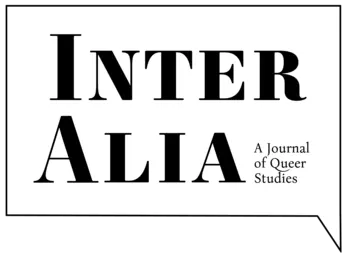https://doi.org/10.51897/interalia/MHHU3245
Wstęp: Co może być odmieńcze i czym może stać się odmieńczość?
Fragment
Tematycznie zróżnicowany 15. numer czasopisma InterAlia przyczynia się do poszerzenia znaczenia słowa „odmieńcze” na różne, nieoczekiwane sposoby. Z jednej strony zawiera on hiszpańskie tłumaczenia przełomowych dla studiów queer esejów Lee Edelmana i Davida M. Halperina, z drugiej zaś nakłania nas również do zastanowienia się nad odmieńczością figury palacza, muzyki granej na krajalnicy do jajek, osoby dorosłej, która odmawia wyrzeczenia się dzieciństwa, gadającej sosny, która opowiada melodramatyczną baśń z czasów Republiki Weimarskiej, czy urodzonej w Montanie pisarki, która nauczyła się mówić językiem swego męża imigranta na tyle dobrze, by stać się poetką szanowaną w Ukrainie, a następnie „wyszła z szafy” jako lesbijka i opublikowała pierwszy amerykański best-seller o gejach. Ponadto, niniejszy numer wyraża zaniepokojenie kondycją i przyszłością studiów queer w różnych miejscach na świecie, a także zjawiskiem utowarowienia odmieńczych tożsamości za sprawą wprowadzania do globalnej gospodarki informacyjnej preferowanych zaimków płciowych i innych informacji osobistych. Wreszcie numer ten drąży odwieczny problem pozornego braku podstaw dla wspólnoty osób identyfikujących się jako odmieńcy, którzy nie mają ze sobą nic wspólnego poza swym jednostkowym pożądaniem. Czym może być odmieńczość – pytają autorzy tekstów, które tu publikujemy – i co może być odmieńcze w sensie politycznym, filozoficznym i estetycznym?
Introduction: What Can Be Queer and What Can Queer Be?
Extract
This heterogeneous issue of InterAlia works hard to stretch the meaning of queer in unexpected ways. While it includes the Spanish translations of seminal queer studies essays by Lee Edelman and David M. Halperin, it also contemplates the queerness of the figure of the smoker, the music made by an egg slicer, the adult who refuses to renounce childhood, the talking pine tree that spins a melodramatic tale of the Weimar Republic, and the Montana-born writer who learned her immigrant husband’s language – Ukrainian – well enough to be recognized as a poet in Ukraine, then came out as a lesbian, and went on to publish the first American bestseller about gay men. This issue of InterAlia also worries about the condition and prospects of queer studies in various places, and about the commodification of queer identities as a consequence of feeding preferred gender pronouns and other personal data into the global information economy. Finally, this issue probes the perennial question of the apparent absence of a ground for community among self-identified queers, who have nothing in common but their singular desire. What, ask the contributors to this issue, can queer be/be queer politically, philosophically, aesthetically?
